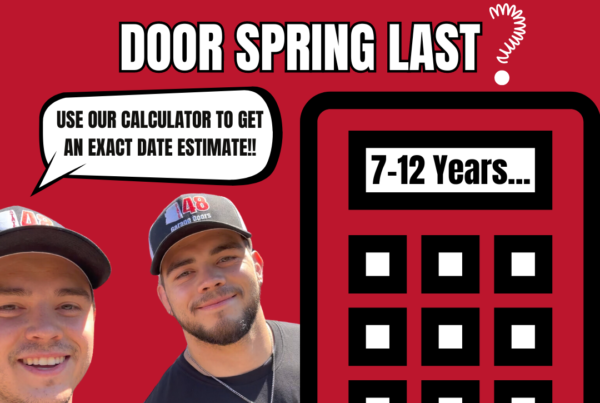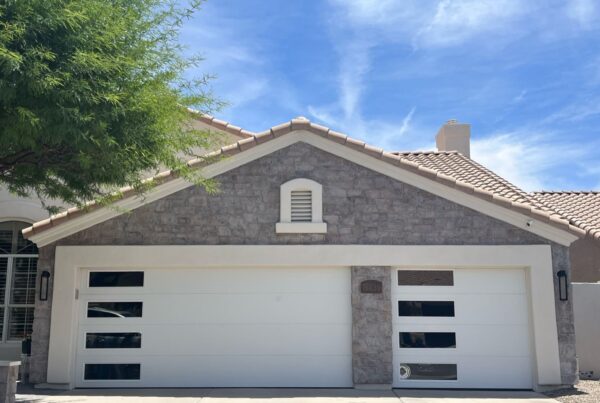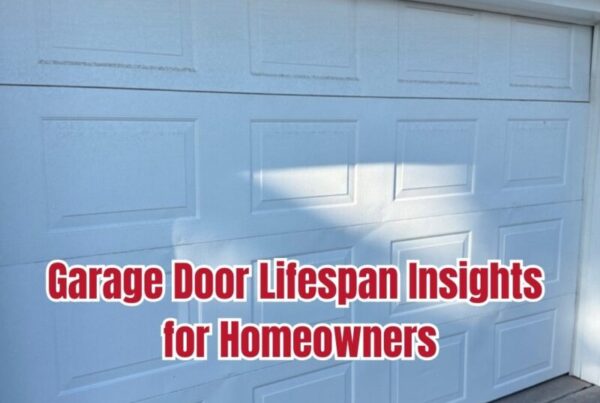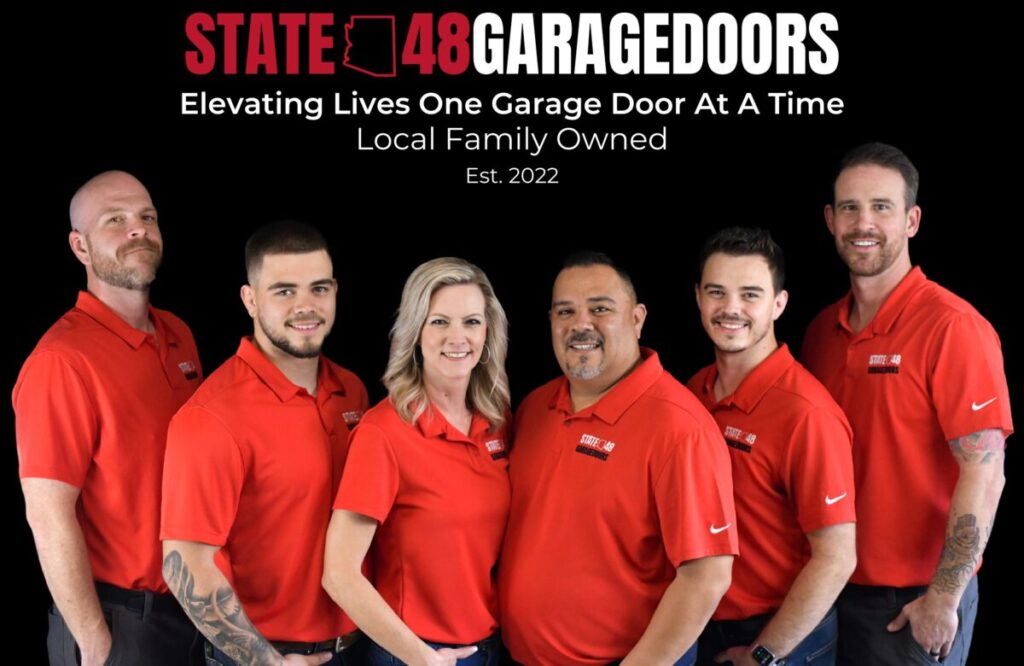
Troubleshooting Tips for Garage Doors That Won’t Close

Why Your GarageDoor Won’t Close All the Way: Troubleshooting and Solutions
Is your garagedoor refusing to close all the way? This common issue can be frustrating and potentially compromise your home’s security. In this guide, we’ll explore the main reasons behind this problem and provide practical solutions. You’ll learn how to troubleshoot closing issues, understand sensor problems, and maintain your garagedoor properly. By the end, you’ll have the knowledge to diagnose and potentially fix your garagedoor, saving you time and money on unnecessary service calls.
Common Reasons Why Your GarageDoor Won’t Close All the Way

Your garagedoor might not close fully due to various issues. These can include incorrect travel limits, obstructed safety sensors, malfunctioning remote controls, misaligned tracks, blocked photo eyes, broken springs, or power supply problems. Understanding these common reasons can help you troubleshoot the issue. Let’s explore each problem, from checking the lens to using a wrench, and learn how to solve them without causing extra noise or needing a new radio.
Incorrect Travel Limits
Your garagedoor‘s travel limits determine how far it moves up and down. If these limits are set incorrectly, your door might not reach the floor when closing. You can adjust the travel limits using the control panel on your garagedoor opener. Look for two screws labeled “UP” and “DOWN” near the ceiling. Turn the “DOWN” screw clockwise to make the door close further, ensuring it forms a proper seal with the floor. Be careful not to ovehttps://en.wikipedia.org/wiki/Ceilingr-adjust, as this could cause the door to hit the ground too hard, potentially damaging the latch or triggering the safetybeam.
- Locate the control panel on your garagedoor opener
- Find the “UP” and “DOWN” adjustment screws
- Turn the “DOWN” screw clockwise to lower the closing point
- Test the door and readjust as needed
- Ensure the door forms a proper seal without hitting the ground too hard
Obstructed Safety Sensors
Your garage door’s safety sensors, located about 6 inches from the floor, can get blocked by debris or misaligned, preventing the door from closing fully. Check for any objects obstructing the sensor’s path and clean the lenses to remove dirt or moisture. If you notice wear on the sensors, consider contacting a garagedoorrepair phoenix service. Sometimes, an electrician might be needed to address wiring issues affecting the sensors’ function.
Malfunctioning Remote Control
Your remote control might be the culprit if your garagedoor won’t close completely. Check the batteries and replace them if necessary. If that doesn’t solve the issue, the remote’s circuit board could be damaged due to wear and tear. In some cases, the remote’s signal might be interfered with by nearby electronics or a faulty safetysensor. To troubleshoot, try using the wall-mounted control panel. If the door closes properly from there, your remote likely needs repair or replacement. Remember to inspect the weatherstripping and gear for any signs of damage that could affect the door‘s operation:
- Replace remote batteries
- Test wall-mounted control panel
- Check for signal interference
- Inspect remote for physical damage
- Examine door components like weatherstripping and gears
Misaligned Tracks
Misaligned tracks can prevent your garagedoor from closing fully. You might notice this issue if your door makes scraping noises or struggles to move smoothly. Check the tracks for any bends, gaps, or debris that could obstruct the door‘s movement. If you spot misalignment, you can try loosening the screws on the track brackets and gently tapping the tracks back into place. However, if the problem persists, it’s best to call a professional garagedoor service. They can properly realign the tracks and ensure your overhead door operates safely, potentially saving you from a costly garage door replacement down the line.
Blocked Photo Eyes
Your garagedoor‘s photo eyes, small sensors near the bottom of the door, can become blocked, preventing the door from closing fully. These sensors use a beam of light to detect obstacles, and if anything interrupts this beam, including dust or debris, your door won’t close. Check for objects in the sensor‘s path and clean the lenses with a soft cloth. If you experience a power outage, the sensors might not function properly until electricity is restored. Also, ensure your garagedoor track alignment is correct, as misalignment can affect the sensors’ positioning. If the problem persists, you might need to check the transmitter or call a professional to inspect the system.
Broken Springs
Broken springs can prevent your garagedoor from closing properly. These crucial components help balance the door‘s weight, and when they fail, your door might not move smoothly or close completely. You might hear a loud bang when a spring breaks, often during operation. If you suspect broken springs, don’t attempt to fix them yourself as they’re under high tension. Instead, call a professional garagedoor service to replace them safely. Remember, broken springs can affect your door‘s alignment and potentially damage other components like wires or the window, so prompt repair is essential.
Power Supply Issues
Power supply issues can prevent your garagedoor from closing fully. Check if your opener is plugged in and the circuit breaker hasn’t tripped. Sometimes, a faulty motherboard or loose wiring in the opener’s bracket can disrupt power flow. When troubleshooting, be cautious of the door‘s tension and avoid touching any plumbing near electrical components. If you’re unsure, it’s best to call a professional to safely diagnose and fix the problem.
How to Troubleshoot GarageDoor Closing Problems

Troubleshooting your garagedoor closing issues starts with a few simple steps. You’ll inspect the sensors, adjust travel limits, check track alignment, look for obstructions, and test the opener. These tasks might require basic tools like a screwdriver or mallet. Even if you’re not a handyman, these steps can help you identify problems before calling a professional. Remember, safety comes first when dealing with home automation systems like garage doors.
Inspect GarageDoor Sensors
When inspecting your garagedoor sensors, start by checking the infraredbeam alignment. Clean the sensor lenses with a soft cloth and ensure no objects block their path. Look for any loose wires or damaged switches that might disrupt the signal. If you notice issues with the torsion spring or other mechanical components, it’s best to call a professional for home repair. Remember, proper sensor function is crucial for your garagedoor‘s safety and operation.
Adjust Travel Limits
To adjust travel limits, locate the control panel on your garagedoor opener. Look for screws labeled “UP” and “DOWN.” Turn the “DOWN” screw clockwise to lower the closing point, ensuring the door forms a proper seal without hitting the ground too hard. Be cautious of voltage when working near the opener, and avoid touching any glass components to prevent injury. If you encounter garagedoorsensor issues during this process, it may be best to consult a professional. Remember, adjusting travel limits isn’t a javascript function – it’s a mechanical process that requires careful attention:
- Locate the control panel on your garagedoor opener
- Find the “UP” and “DOWN” adjustment screws
- Turn the “DOWN” screw clockwise to lower the closing point
- Test the door and readjust as needed
- Ensure the door forms a proper seal without hitting the ground too hard
Examine Track Alignment
Check your garagedoor tracks for proper alignment to ensure smooth closing. Look for any bends, gaps, or debris that could obstruct the door‘s movement. You can use a level to verify if the tracks are straight and parallel. If you spot misalignment, loosen the screws on the track brackets and gently tap the tracks back into place with a rubber mallet. Pay attention to the hinges, as worn or loose ones can affect track alignment. For a more thorough inspection, consider using a camera to capture hard-to-see areas. If you’re unsure about the process, consult home improvement forums on Reddit or Twitter for tips from experienced DIYers.
Check for Obstructions
Check your garagedoor‘s path for any obstructions that might prevent it from closing fully. Look for small objects, dust, or debris that could trigger the safety sensors or block the door‘s movement. Inspect the power supply to ensure it’s not causing interference. Examine the remote control for any issues, and verify that all screws are tightened properly. If you’re still having trouble, consider sharing your problem on Facebook for community advice. Remember to check these areas:
- Door tracks and rollers
- Safetysensor lenses
- Floor beneath the door
- Power outlets and wiring
- Remote control functionality
Test the GarageDoor Opener
To test your garagedoor opener, start by using the wall-mounted control panel. If it works there but not with the remote, you might need to replace the remote’s batteries or reprogram it. Check the opener’s power supply and ensure all connections are secure. Listen for unusual noises during operation, which could indicate wear on components like rollers or springs. Regular testing and maintenance can extend the longevity of your garagedoor system, potentially reducing the need for costly garagedoor repairs in the future. Remember, investing in quality parts and professional service can offer better warranty coverage and long-term value for your garagedoorinvestment:
- Use wall-mounted control panel to test opener
- Check remote control functionality
- Verify power supply and connections
- Listen for unusual noises during operation
- Consider professional maintenance for longevity
Understanding GarageDoorSensor Issues

Garagedoor sensors play a crucial role in your door‘s safe operation. If your door won’t close fully, sensor issues might be the culprit. Learn how these safety devices work, spot signs of malfunction, and troubleshoot common problems. From aligning sensors to cleaning lenses and replacing faulty units, you’ll discover practical solutions. Don’t let dirt or a tangled rope interfere with your sensors’ performance.
How Safety Sensors Function
Your garagedoorsafety sensors use a beam of light to detect obstacles in the door‘s path. Located near the bottom of the door frame, these sensors communicate with each other. When an object interrupts the beam, the sensors signal the opener to stop closing or reverse the door. This simple yet effective system helps prevent accidents and damage to your property or vehicles.
Signs of Malfunctioning Sensors
You can spot malfunctioning garagedoor sensors by watching for a few key signs. If your door starts to close but immediately reverses, or if it won’t close at all when you press the button, your sensors might be the problem. Check the small lights on each sensor; they should be lit when aligned properly. If one or both lights are off or blinking, you may have an alignment issue or a faulty sensor. Listen for any clicking sounds from the opener when you try to close the door, as this can indicate the system is detecting an obstacle that isn’t there.
TroubleshootingSensor Alignment
To troubleshoot sensor alignment, start by checking if the sensors are at the same height on both sides of the garagedoor. Use a level to ensure they’re perfectly aligned. If they’re misaligned, loosen the mounting brackets and adjust the sensors until they face each other directly. Clean the sensor lenses with a soft cloth to remove any dirt or debris that might be blocking the signal. Test the door after each adjustment to see if the problem is resolved. If you’re still having issues, you might need to check the wiring or replace the sensors:
- Check sensor height and alignment
- Use a level to ensure proper positioning
- Adjust mounting brackets if needed
- Clean sensor lenses
- Test door operation after adjustments
- Inspect wiring or consider sensor replacement if problems persist
Cleaning Sensor Lenses
To clean your garagedoorsensor lenses, grab a soft, lint-free cloth and gently wipe them down. Avoid using harsh chemicals or abrasive materials that could scratch the lenses. If you notice stubborn dirt or grime, use a mild soap solution to clean them thoroughly. After cleaning, dry the lenses completely to prevent any moisture from interfering with their operation. Regular cleaning can help maintain your sensors’ effectiveness and prevent false readings that might cause your door to malfunction.
Replacing Faulty Sensors
If you’ve tried troubleshooting and cleaning your garagedoor sensors without success, it might be time to replace them. You can purchase replacement sensors at most hardware stores or online. Before installing new sensors, disconnect the power to your garagedoor opener for safety. Carefully remove the old sensors and attach the new ones in the same position. Connect the wires as they were on the old sensors, then realign and test the new units. If you’re not comfortable with electrical work, consider calling a professional garagedoor service to ensure proper installation and alignment.
The Importance of Proper Track Alignment

Proper track alignment is crucial for your garagedoor‘s smooth operation. Learn to spot misalignment issues and realign tracks yourself using the right tools. We’ll show you signs of damaged tracks and when it’s best to call in the pros. By understanding these aspects, you’ll keep your garagedoor running smoothly and avoid costly repairs.
Identifying Misalignment Issues
You can spot misaligned tracks by looking for visible gaps between the rollers and the track, or if your door makes scraping noises when opening or closing. Check if the tracks are parallel and level using a spirit level. If you notice the door wobbling or getting stuck at certain points, it’s likely due to misalignment. Look for these signs of track misalignment:
- Visible gaps between rollers and track
- Scraping or grinding noises during operation
- Door wobbling or sticking at certain points
- Tracks not parallel or level
- Bent or damaged sections of track
Steps to Realign GarageDoor Tracks
To realign your garagedoor tracks, start by loosening the bolts that hold the tracks to the frame. Use a level to check if the tracks are straight and parallel. Gently tap the tracks into position with a rubber mallet. Once aligned, tighten the bolts securely. Test the door‘s movement to ensure smooth operation. If you encounter difficulties or the misalignment persists, it’s best to call a professional garagedoor service for assistance.
Tools Needed for Track Alignment
To align your garagedoor tracks, you’ll need a few basic tools. Grab a level to check track straightness, a socket wrench set to loosen and tighten bolts, and a rubber mallet for gentle adjustments. You might also need pliers, a measuring tape, and a flashlight for better visibility. Having these tools on hand will make the alignment process smoother and more efficient:
- Level
- Socket wrench set
- Rubber mallet
- Pliers
- Measuring tape
- Flashlight
Signs of Damaged Tracks
You can spot damaged tracks by looking for visible dents, bends, or rust. Check for gaps between the rollers and the track, which can indicate warping. Listen for unusual noises when your door operates, as these can signal track issues. If you notice your door moving unevenly or getting stuck, it might be due to track damage. Addressing these problems promptly can prevent more serious issues down the line.
When to Seek Professional Assistance
You should seek professional assistance when track alignment issues persist after your DIY efforts or if you notice severe damage like bent or rusted tracks. Call a garagedoor expert if you hear loud grinding noises, see the door wobbling excessively, or if it gets stuck frequently. These signs often indicate complex problems that require specialized tools and expertise to fix safely and effectively. Remember, attempting complex repairs yourself can lead to injury or further damage to your garagedoor system:
- Persistent alignment issues after DIY attempts
- Severely bent or rusted tracks
- Loud grinding noises during operation
- Excessive door wobbling
- Frequent door sticking or jamming
Preventative Maintenance for Garage Doors

Keep your garagedoor in top shape with regular maintenance. Inspect it often, lubricate moving parts, and clean tracks and sensors. Schedule professional tune-ups to catch issues early. These simple steps can prevent many common problems, ensuring your door closes properly and operates smoothly for years to come.
Regular Inspections
You should inspect your garagedoor regularly to catch potential issues early. Check the springs, cables, rollers, and pulleys for signs of wear or damage. Test the door‘s balance by disconnecting the opener and manually lifting the door halfway; it should stay in place. If it doesn’t, your springs might need adjustment. Look for any loose hardware and tighten as needed. These simple checks can help prevent your door from failing to close properly.
Lubrication of Moving Parts
You should lubricate your garagedoor‘s moving parts regularly to keep it operating smoothly. Apply a silicone-based lubricant to the rollers, hinges, and springs every six months. This reduces friction, prevents rust, and helps your door close properly. Remember to wipe off any excess lubricant to avoid attracting dirt and debris.
Routine Cleaning of Tracks and Sensors
You should clean your garagedoor tracks and sensors regularly to prevent debris buildup that can cause closing issues. Use a damp cloth to wipe down the tracks, removing dirt and grime that can interfere with smooth operation. Clean the sensor lenses with a soft, dry cloth to ensure they can detect obstacles properly. This simple maintenance task helps your door close fully and safely every time.
Scheduling Professional Tune-Ups
You should schedule professional tune-ups for your garagedoor at least once a year. A certified technician can spot potential issues you might miss and perform maintenance tasks that require specialized tools. During these check-ups, they’ll inspect your door‘s springs, cables, and opener, ensuring everything works smoothly. Regular professional maintenance can extend your door‘s lifespan and prevent costly repairs down the line.
Frequently Asked Questions About GarageDoor Issues

Got garagedoor troubles? We’ve got answers. Learn what to do when your door won’t close fully, why it might stop halfway, how to check if your sensors are working, and signs of misalignment. These common issues can be frustrating, but with our tips, you’ll be better equipped to handle them or know when to call a pro.
What to Do if Your GarageDoor Won’t Close Completely?
If your garagedoor won’t close completely, start by checking the safety sensors near the floor. Clean the lenses and ensure they’re aligned properly. Next, inspect the tracks for any debris or obstructions that might prevent the door from closing. Adjust the close limit switch on your opener if needed. If these steps don’t solve the issue, you might need to call a professional. Here’s a quick checklist to follow:
- Check and clean safety sensors
- Inspect tracks for obstructions
- Adjust close limit switch
- Lubricate moving parts
- Test remote and wall controls
- Call a professional if problems persist
Why Does My GarageDoor Stop Halfway Down?
Your garagedoor might stop halfway down due to misaligned safety sensors or obstructions in its path. Check if anything’s blocking the sensors or if they’re dirty. Adjust the door‘s travel limits if needed, as incorrect settings can cause this issue. If you hear grinding noises, your tracks might be misaligned or your rollers could be worn out. Don’t forget to test your remote and wall controls to rule out any electrical problems.
How Can I Tell if My GarageDoor Sensors Are Working?
You can tell if your garagedoor sensors are working by checking the indicator lights on each sensor. When functioning correctly, both sensors should have a steady light. If one or both lights are off or blinking, there might be an issue with alignment or power. You can also test the sensors by placing an object in the door‘s path and trying to close it. If the door reverses or stops, your sensors are working properly.
What Are the Signs of a Misaligned GarageDoor?
You can spot a misaligned garagedoor by looking for visible gaps between the door and the frame, or if the door scrapes against the sides when opening or closing. Listen for unusual noises like grinding or squeaking during operation, which often indicate misalignment. Check if your door looks uneven when it’s partially open or if it’s harder to open manually than usual. These signs suggest you might need to adjust your door‘s alignment:
- Visible gaps between door and frame
- Scraping against sides during movement
- Grinding or squeaking noises
- Uneven appearance when partially open
- Difficulty opening manually
Effective Solutions for Garage Door Closing Issues: A Conclusion
Understanding why your garagedoor won’t close all the way is crucial for maintaining your home’s security and functionality. From misaligned tracks to faulty sensors, various issues can prevent proper closure, but many can be resolved with simple troubleshooting steps. Regular maintenance, including cleaning sensors and lubricating moving parts, can prevent most common problems and extend your door‘s lifespan. By addressing issues promptly and knowing when to call a professional, you can ensure your garagedoor operates smoothly and safely for years to come.




